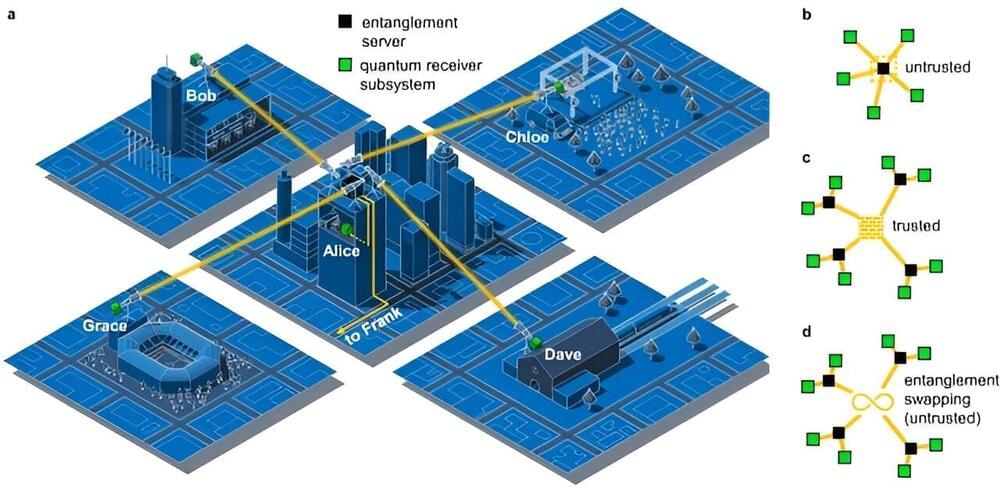Quantum communications have rapidly progressed toward practical, large-scale networks based on quantum key distributions that spearhead the process. Quantum key distribution systems typically include a sender “Alice,” a receiver “Bob,” who generate a shared secret from quantum measurements for secure communication. Although fiber-based systems are well-suited for metropolitan scale, a suitable fiber infrastructure might not always be in place.
In a new report in npj Quantum Information, Andrej Kržič and a team of scientists developed an entanglement-based, free-space quantum network. The platform offered a practical and efficient alternative for metropolitan applications. The team introduced a free-space quantum key distribution system to demonstrate its use in realistic applications in anticipation of the work to establish free-space networks as a viable solution for metropolitan applications in the future global quantum internet.
Quantum communication typically aims to distribute quantum information between two or more parties. A series of revolutionary applications of quantum networks have provided a roadmap towards engineering a full-blown quantum internet. The proposed invention provides a heterogeneous network of special purpose sub-networks with diverse links and interconnects. The concept of quantum key distribution networks have driven this development to pave the way for other distributed quantum information processing methods to benchmark the technological maturity of quantum networks in general.










Comments are closed.